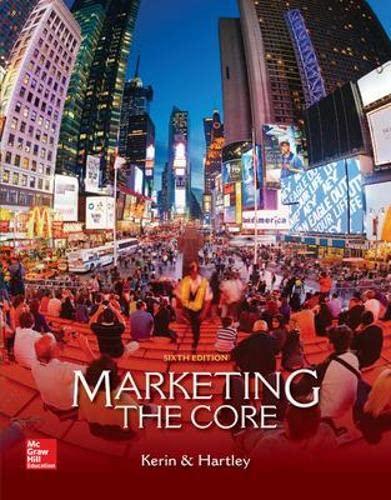Let me tell you a little bit about the history of Trek, says Mark Joslyn, vice president
Question:
“Let me tell you a little bit about the history of Trek,” says Mark Joslyn,
vice president of human resources at Trek Bicycle Corporation. “It’s a fantastic story,” he continues proudly, “It’s a story about a business that started in response to a market opportunity.” That opportunity was to build bicycles with the highest-quality frames. In fact,
Trek’s mission was simple: “Build the best bikes in the world.” To do this Trek needed to find the best raw materials from the best vendors. Michael Leighton, a Trek product manager, explains, “Our relationship with our vendors is incredibly important, and one of our recipes for success!”
THE COMPANY Trek Bicycle was founded in 1976 by Richard Burke and Bevill Hogg. With just five employees they began manufacturing bicycles in a Wisconsin barn. From the beginning they targeted the high-quality, prestige segment of the bicycle market, using only the best materials and components for their bicycles. The first year they manufactured 900 custom-made bicycles which sold quickly. Soon, Trek exceeded its manufacturing capacity.
It built a new 26,000-square-foot factory and corporate headquarters to help meet growing demand.
Trek’s focus on quality meant that it was very sensitive to the materials used to manufacture the bicycles. The first models, for example, used hand-brazed steel for the frames.
Then, borrowing ideas from the aerospace industry, Trek soon began making frames out of bonded aluminum. Following on the success of its aluminum bicycles, Trek began manufacturing bicycles out of carbon fiber. The idea was to be “at the front of technology,” explains Joslyn.
The company also expanded its product line. Its first bikes were designed to compete directly with Japanese and Italian bicycles and included road racing models. In 1983 Trek manufactured its first mountain bike. In 1990 Trek developed a new category of bicycle—called a multitrack—
that combined the speed of road bikes with the ruggedness of mountain bikes. The company also began manufacturing children’s bikes, tandem bikes, BMX bikes, and models used by police departments and the U.S. Secret Service. In addition, it added a line of cycling apparel called Trek Wear and cycling accessories such as helmets. Recently,
Trek also undertook an Eco Design initiative to build bicycles and parts that are
“green” in terms of the environmental impact of manufacturing them,
how long they last, and how they can be recycled.
To accommodate these production demands,
Trek expanded its facilities two more times.
As Trek’s popularity increased, it began to expand outside of the United States. For example, the company acquired a Swiss bicycle company called Villiger and the oldest bicycle company in Germany, Diamant. It also expanded into China, opening two stores and signing deals with 20 Chinese distributors.
Questions
1 What is the role of the buying center at Trek? Who is likely to comprise the buying center in the decision to select a new supplier at Trek?
2 What selection criteria does Trek utilize when it selects a new supplier or evaluates an existing supplier?
3 How has Trek’s interest in the environmental impact of its business influenced its organizational buying process?
4 Provide an example of each of the three buying situations—straight rebuy, modified rebuy, and new buy—at Trek.
Step by Step Answer:






